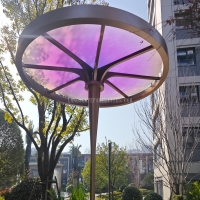Welcome to the website for landscape facilities products and knowledge.
What are the key factors in pricing landscape chairs for competitive markets?
Pricing landscape chairs for competitive markets requires a careful balance of multiple factors to ensure profitability while remaining attractive to customers. Here are the key elements to consider:
1. Material Costs: The type of materials used—such as teak, aluminum, or recycled plastic—directly impacts production costs and final pricing. High-quality, durable materials often command higher prices but justify the investment with longevity.
2. Design Complexity: Intricate designs or custom features increase manufacturing time and labor costs. Simplified, modular designs can reduce expenses while maintaining aesthetic appeal.
3. Manufacturing and Labor: Geographic location of production facilities and labor rates significantly affect pricing. Outsourcing to low-cost regions may reduce expenses but could impact quality control.
4. Market Demand and Competition: Analyzing competitors’ pricing and consumer demand helps position products effectively. Premium brands can charge more, while budget-focused markets require cost-efficient solutions.
5. Distribution and Logistics: Shipping bulky outdoor furniture involves high transportation costs. Localized production or flat-pack designs can minimize these expenses.
6. Brand Value and Perception: Established brands with strong reputations can price higher due to perceived quality and trust. New entrants must compete through innovation or affordability.
By evaluating these factors, businesses can develop competitive pricing strategies that align with market expectations and profitability goals.
Related search:

Recommendation
Metal frame with gradient color acrylic combined with high-end shading landscape facilities